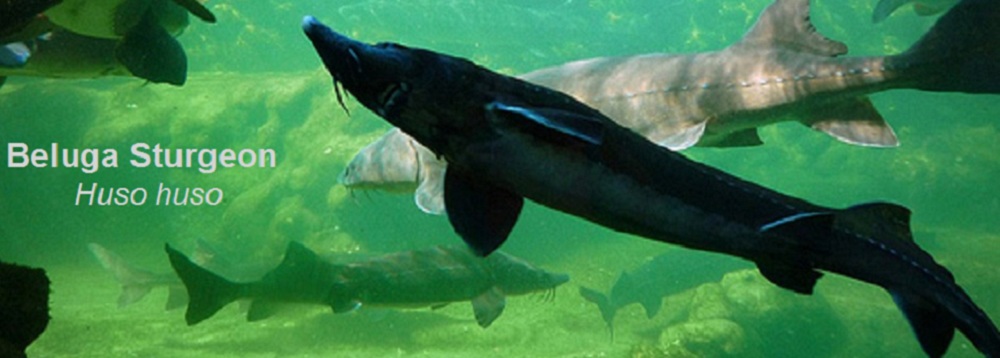Classification
All organisms fall somewhere into the phylogenetic tree of life that is seen above. No matter the organism, the location it resides, or how the organism functions, it will fall into that very tree. Although the classification of other organisms into a category may be vague and under dispute, the classification of the beluga sturgeon is pretty well set. Read on!
Domain: Eukarya
The term Eukarya is derived from Greek origins and means good, or
true, nucleus. An organism's classification into the domain Eukarya
requires that the organism contains a true membrane-bound nucleus
and membrane-bound organelles.
Kingdom: Animalia
In order for an organism to be classified into the kingdom Animalia,
the organism must be motile at some point during its life-cycle,
heterotrophic and multicellular.
Phylum: Chordata
Organisms are classified as being in the phylum Chordata if at some
point in the life-cycle the organism possesses:
- a notochord - a flexible rod-like structure that is used for support
- a single dorsal nerve chord - a hollow nerve chord that is located dorsal to the notochord
- a postanal tail - a muscular structure that extends posterior to the anus
- an endostyle - a ciliated groove located on the ventral surface of the pharynx
- pharyngeal pouches - gill slits
This group is incredibly diverse. Believe it or not, giraffes, the green heron, and the giant panda all fall into this category!
Class: Actinopterygii
Commonly called ray-finned fish, organisms are described as being
part of the class Actinopterygii if the organism has a bony
skeleton, an upper jaw that consists of two bones and fins with bony
spines. (Kottelat, 2011)
Order: Acipenseriformes
The order Acipenseriformes is a division of the class Actinopterygii
that is specific to the sturgeons and the paddlefishes. These
organisms generally have an elongated snout and for the most part,
lack scales. The
skeleton of these fish is mostly made of cartilage with the
exception of the skull, the pectoral fins and the jaws, which are
all made of bone. (Leo, 1962)
Family: Acipenseridae
The meaning of the term Acipenseridae is sturgeon, therefore, all
sturgeon fall into this category. Sturgeon are organisms that are
rather long, possess a shovel-shaped snout, have a ventral mouth
that contains no teeth, four barbels that are anterior to the mouth,
and five rows of bony scutes that are used for protection. (Leo,
1962)
Genus:
Huso
Brandt, 1869
Only two species belong to the genus
Huso. Characteristics that belong to adults that belong to this
genus include a short snout that is dorsally cartilaginous and
laterally soft and flexible. The mouth takes a crescent shape and is
very large, covering the entire snout and sometimes the sides of the
head. (Leo, 1962)
Species:
Huso huso Berg,
1911
Characteristics that separate
Huso huso from the other member of the genus Huso are
outwardly morphological. The first dorsal scute of Huso huso
is the smallest of the scutes. The barbels that are anterior to
the mouth tend to look somewhat leaf-like. The dorsal fins tend to
have more than 60 rays. (Leo, 1962)
To return to the homepage, click here.


